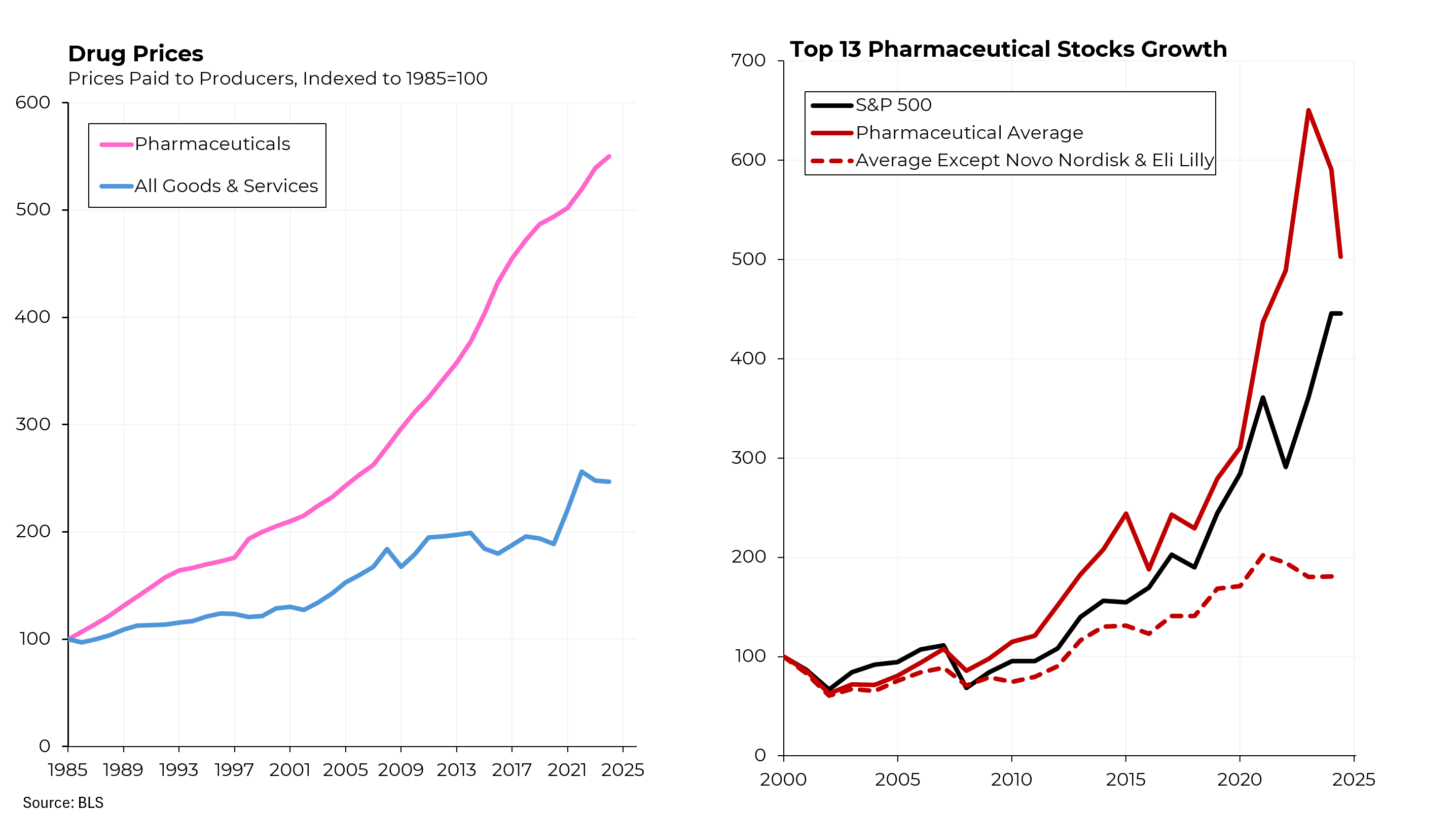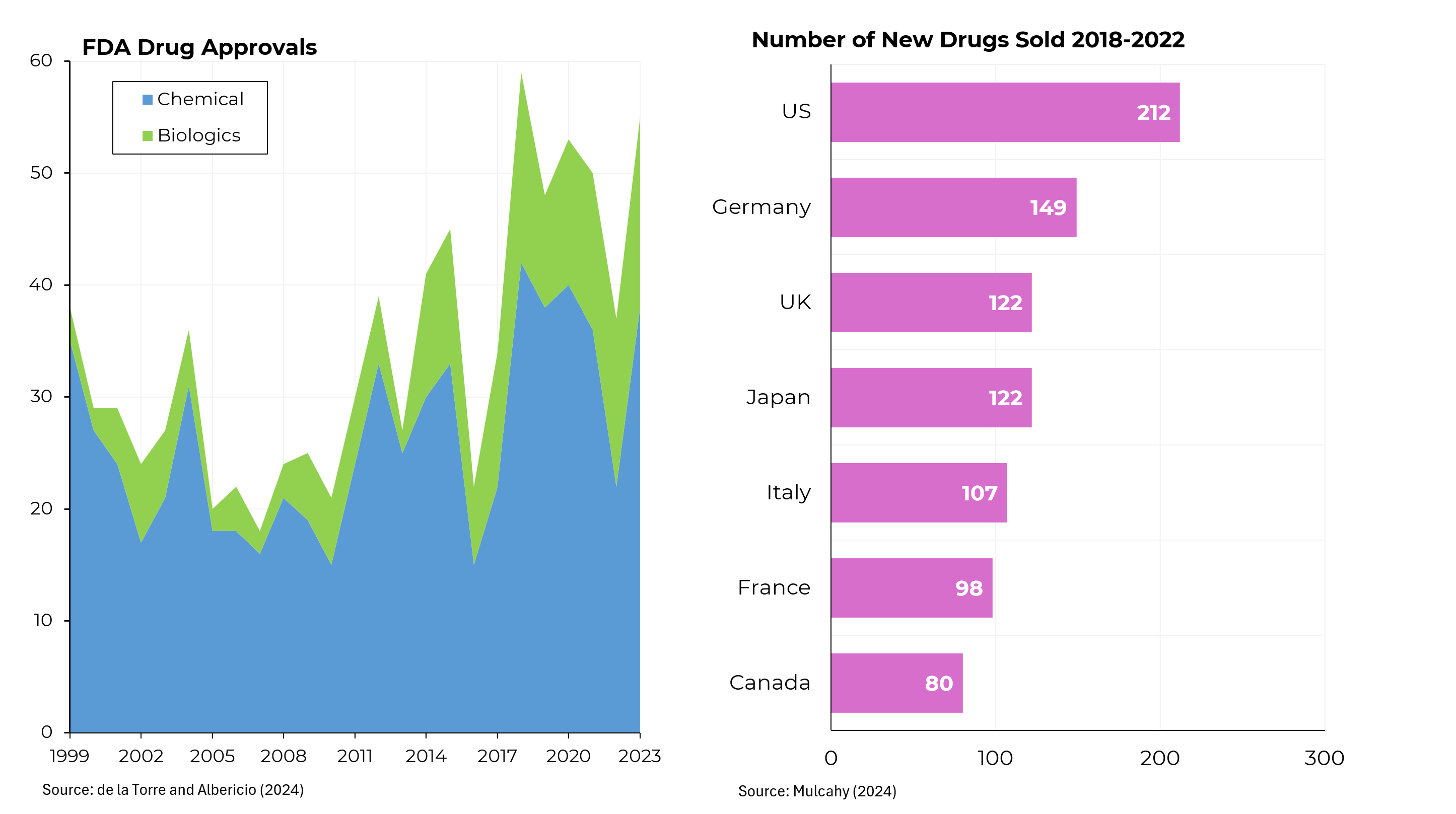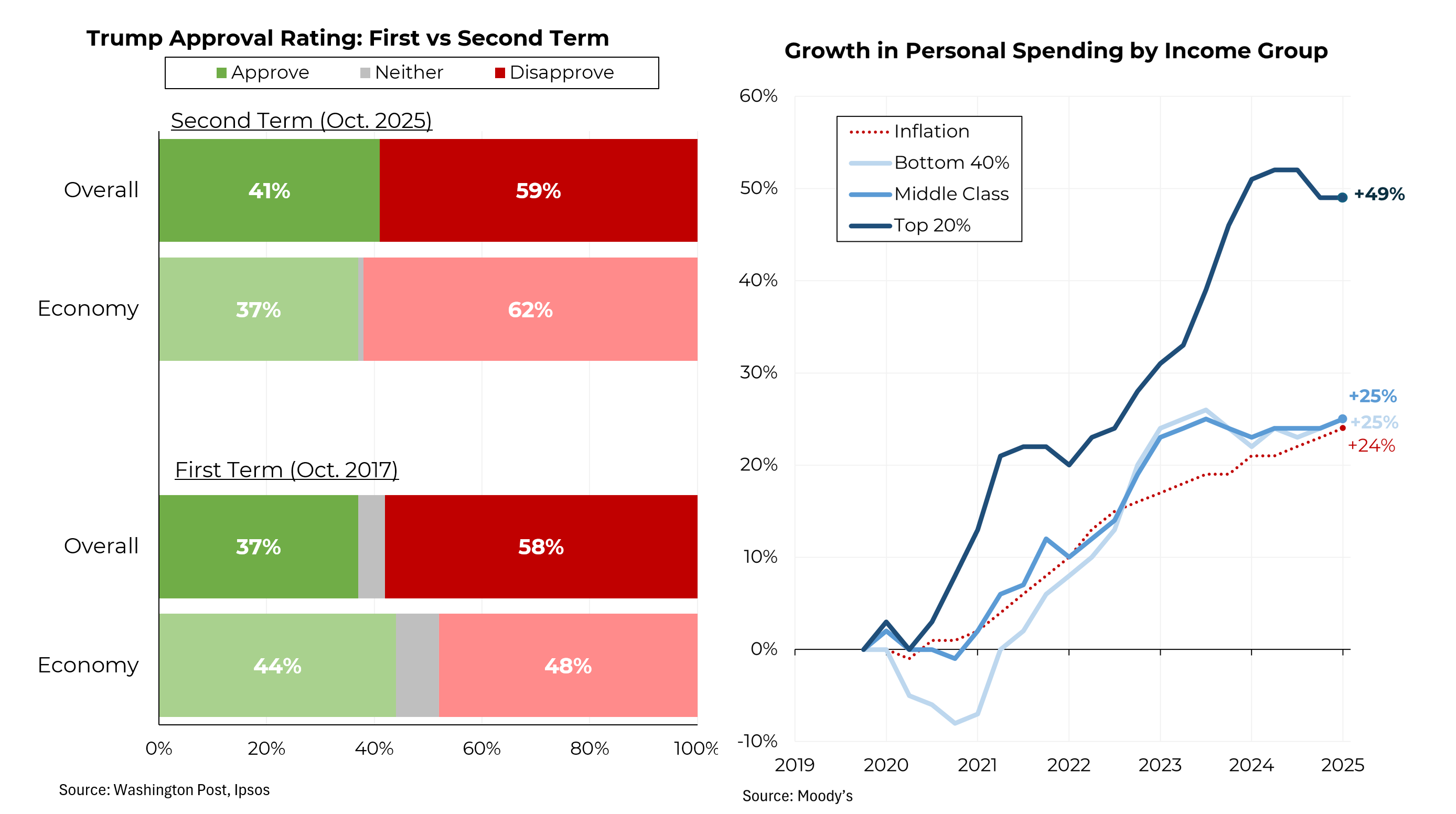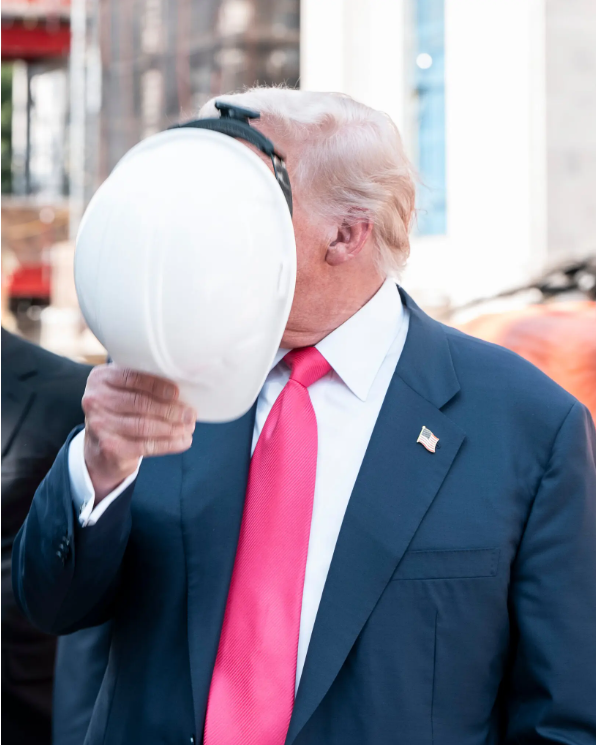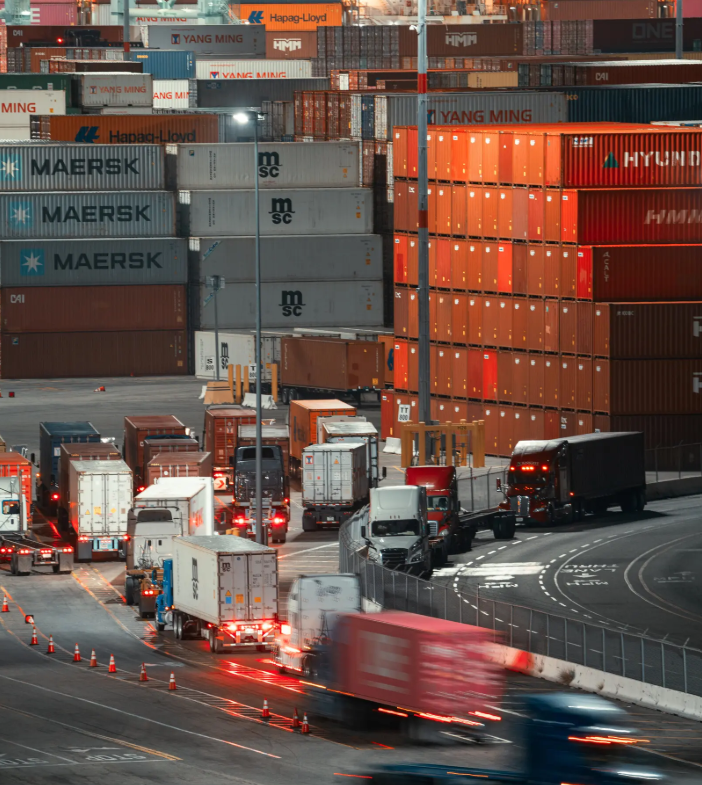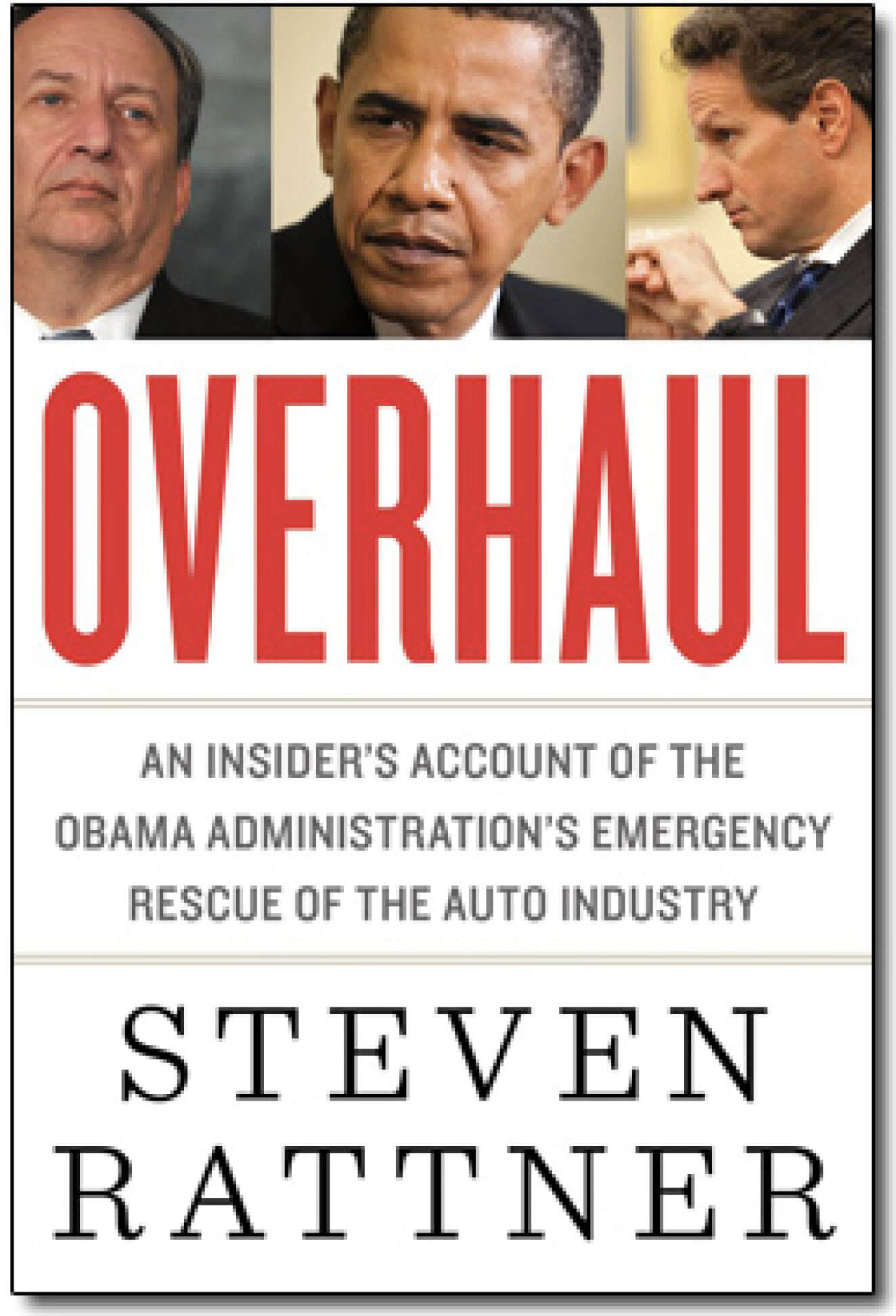President Trump took to Truth Social on Sunday to proclaim that the following morning, he would sign “one of the most consequential Executive Orders in our Country’s history,” an order that would reduce prescription drug prices “almost immediately, by 30% to 80%.” But the next day, the announcement proved to be a lot of nothing because the president lacks the authority that he claimed. The cost of pharmaceuticals continues to rise and present challenges for many Americans.
By now, most Americans probably understand that certain prescription drugs cost more in the United States than elsewhere (although not nearly the five to ten times more than Trump claimed). In reality, branded pharmaceuticals cost around four times as much as in other major countries while generics cost an average of one third less in the U.S. Why is that? A variety of reasons, most importantly the fact that many other countries (like the United Kingdom) have nationalized health care, meaning that the system as a whole negotiates the drug prices with the manufacturer. In contrast, Americans buy their drugs through a variety of insurers – Medicare, Medicaid and for a majority, employer-based insurance. Moreover, many other countries simply won’t pay the high costs of some drugs, meaning that their citizens don’t have access to them.
Generics are less expensive in the U.S. partly because they are more utilized here, meaning more price competition among suppliers.
The problem is that while 90% of prescriptions are written for generic drugs, almost 90% of spending goes to branded pharmaceuticals.
Trump has seized on the issue because drug prices have been rising far faster than inflation. Since 1985, they are up 5 ½ times, while overall prices have increased by a comparatively modest 2 ½ times. As a result, vast majorities of both Republicans and Democrats want the government to do something about these rising costs (even though prescriptions constitute less than 10% of healthcare costs).
Surprisingly, even with these huge price increases, drug companies have mostly not been particularly strong performers on stock markets. Yes, the top companies as a group have outperformed the overall market, increasing by 400% since 2000 versus 346% for the S&P 500). But much of the disparity has occurred relatively recently and relates to the introduction of weight loss drugs like Ozempic and Mounjaro. Eliminating the two companies that make those drugs turns the pharma companies into underperformers.
Why is that? Because more and more drugs are being developed and the cost of developing those products is huge and has been escalating. Between 2011 and 2023, an average of 41.5 new drugs were approved each year, compared to 26 per year between 2011 and 2023. And a growing share of the new drugs are “biologics,” which are particularly expensive to develop and produce.
But on the other hand, Americans have access to more new drugs that citizens of other countries. Almost all new drugs are introduced in the U.S. first or second, in large part because of the high prices they can command.

